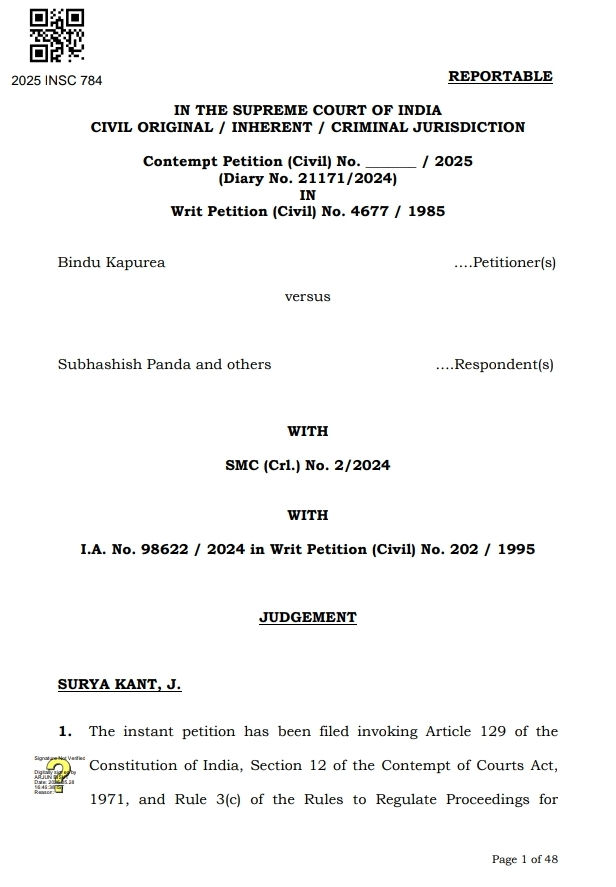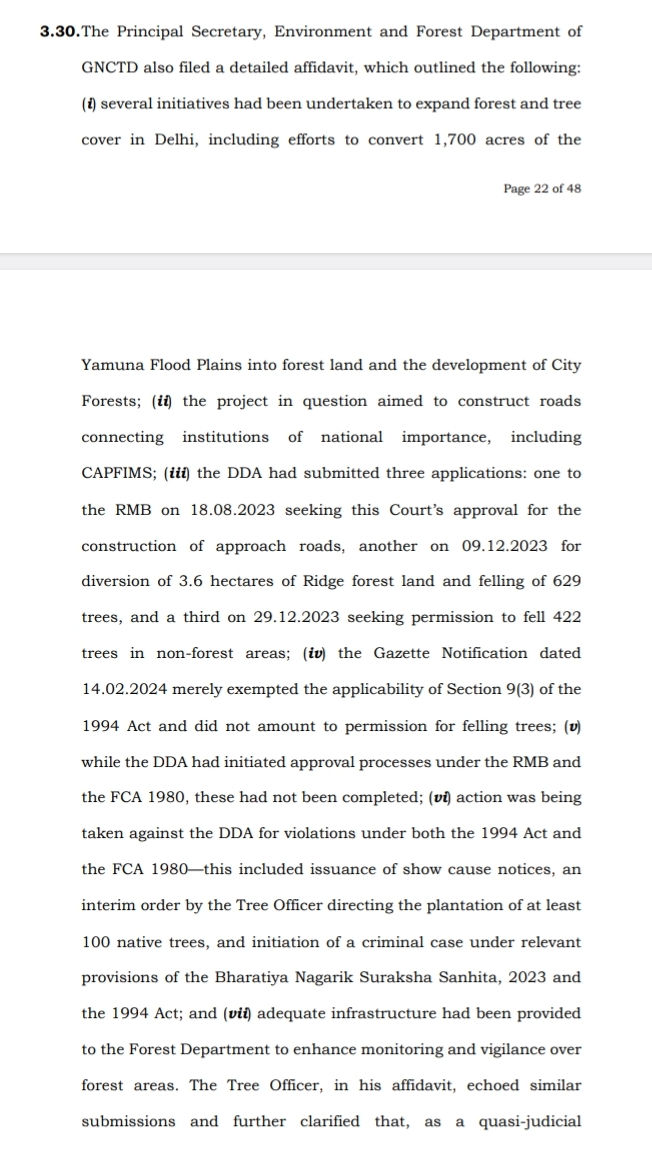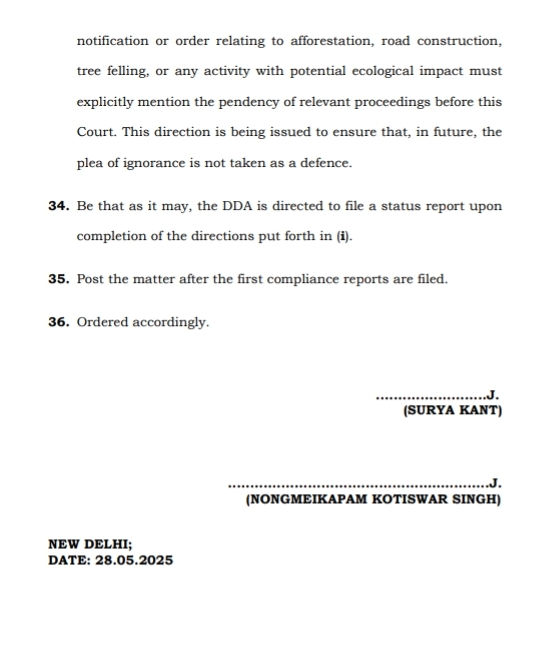Delhi Ridge: SC Hauls Up DDA for Contempt in Unauthorized Tree Felling
- M.R Mishra

- Jun 29
- 3 min read
\In a stunning display of institutional overreach and environmental apathy, the Delhi Development Authority (DDA) found itself at the receiving end of the Supreme Court’s wrath in Bindu Kapurea v. Subhashish Panda & Ors., a contempt proceeding rooted in the illegal felling of over 1,600 trees from Delhi’s ecologically critical Southern Ridge.

What began as an infrastructure proposal for roads connecting SAARC University and the CAPFIMS hospital escalated into one of India’s most serious recent cases of environmental contempt.
SC held DDA guilty of contempt for cutting 1,600+ trees in Delhi Ridge without permission. Citing public interest, no jail was imposed but penalties, afforestation, and a strong warning followed. Ridge saved by the Court, not the authorities.
The DelhiRidge colloquially the lungs of Delhi is a centuries-old natural formation and forest belt that has been under Supreme Court protection since the iconic M.C. Mehta v. Union of India orders of the 1990s.
Despite clear judicial mandates that any construction or tree removal within the Ridge required prior approval of the Court, the DDA, acting on a Gazette Notification and internal emails referencing an alleged visit by the Lieutenant Governor, went ahead with large-scale felling in February 2024.
By March 2024, satellite images, field investigations, and on-ground activist reports exposed the damage over 1,600 trees felled, bulldozers deployed, roads partially laid, and entire tracts of biodiversity cleared.
The problem? The Court hadn’t granted permission. The Forest Department hadn’t either. And worse during an active hearing before the Supreme Court, the DDA had failed to disclose that the tree felling was already underway.

What followed was judicial accountability at its sharpest.
The Court issued suo motu contempt, suspended officials, ordered internal inquiries, and appointed an independent environmentalist committee to investigate and report. Notably, even the LG’s role came under scrutiny.
The Court stopped short of personal indictments, but not without expressing scathing concern over “grave contumacious conduct” and “wilful suppression” by state instrumentalities.
The DDA argued public interest: that the roads were needed for better access to CAPFIMS a super-speciality hospital for paramilitary forces and their families. The Court acknowledged the argument, recognizing that the institution serves a national welfare function. But it didn’t let the DDA off easily.
The Court held that while the project may serve a genuine public interest, environmental safeguards cannot be reduced to optional checkboxes. It clarified that even when intentions are noble, actions must follow the rule of law.
In a nuanced balancing act, the Court declined to impose jail terms but imposed financial penalties, ordered massive compensatory afforestation, and mandated long-term compliance and transparency from DDA. It also explicitly warned that future lapses will not be met with similar leniency.
This ruling reinforces a vital constitutional doctrine: that environmental protection is not a discretionary function of the state it is a judicially enforceable imperative.
Bindu Kapurea is not merely a contempt case; it is a referendum on governance, urban planning, and administrative candour in ecologically sensitive zones.
In closing, the Court said it best:
“It is only the overwhelming public interest served by CAPFIMS that has, in effect, overshadowed the sheer administrative incompetence and blatant disregard for the orders of this Court.”
With that, it preserved the future of the Ridge this time with a judicial scalpel, not an axe.







Comments